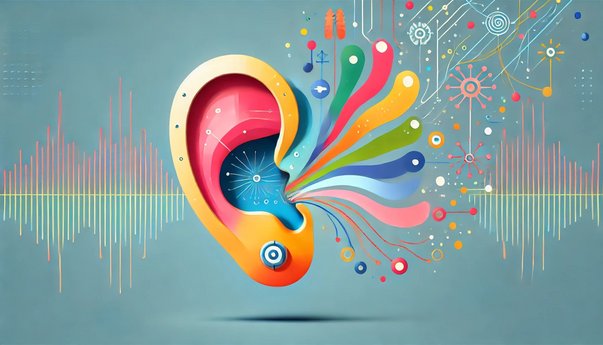

Translated with DeepL
Hearing acoustics has undergone an impressive transformation. Hearing aids, which were still bulky and conspicuous in the early 2000s, are now smart, high-tech tiny devices that are barely visible. Hearing aids today contain various technologies that improve the hearing experience many times over. These include artificial intelligence (AI), sensor technology, Bluetooth and learning systems. AI analyses ambient noise in real time, filters out background noise and amplifies relevant voices. Sensor technology, on the other hand, is key because motion sensors recognise head position or body movements and adjust the microphones accordingly. Bluetooth enables audio streaming, hands-free telephony and control via smartphone app. And learning systems dynamically adapt to the user's hearing needs and continuously optimise their performance.

"Hearing aids are more than just everyday helpers - they are a symbol of how wearable technologies can sustainably improve our quality of life."
Christoph SchwobTechnological advances are turning hearing aids into multifunctional healthcare platforms. In addition to hearing support, they offer numerous additional functions. For example, sensors measure the pulse and recognise stress levels, and some even detect falls. This offers added safety and comfort. In the future, hearing aids could even automatically adapt to the wearer's mental state, e.g. by filtering out disturbing noises during stress. Another important function is that apps could document the progression of hearing and indicate changes at an early stage. These additional functions open up new perspectives not only for people with hearing loss, but also for the healthcare sector as a whole.
"With AI-supported speech recognition and technologies such as Bluetooth, hearing aids are developing into health platforms that do far more than just hear."
Christoph SchwobIn addition to technological advances in signal processing, biotechnological approaches are also opening up new possibilities in hearing acoustics. Innovations that will shape hearing acoustics include stem cell therapy, which could enable the regeneration of hearing cells in the future. One challenge at present, however, is to reconstruct pitches accurately. Neural networks and AI will further improve speech recognition and sound separation and make hearing aids even more intelligent. Self-learning systems have the potential to adapt to users' individual hearing habits and continuously optimise them in the future. The combination of biotechnology and artificial intelligence seems promising and will take hearing acoustics to a new level.
Individualisation is an important topic. Modern hearing aids recognise different listening environments and adapt automatically. In addition to the technical compensation of hearing loss, hearing aids also support the brain in processing acoustic signals. Early action also takes centre stage: The earlier hearing loss is treated, the better the cognitive processing of hearing is preserved. Individualised solutions are the key to not only making it easier for people to hear, but also to enable them to actively participate in social life.
Untreated hearing loss is not only an individual problem, but also a social challenge. It often leads to isolation, depression and economic disadvantages for those affected. Technological innovations, targeted early detection, prevention and social awareness can help to sustainably reduce the consequences and silent endemic spread of hearing loss.
"No two people hear the same - and the requirements of hearing aids are as varied as their wearers. The everyday life of a teacher places different demands on a hearing aid than that of someone who works in the catering industry."
Christoph SchwobHearing acoustics impressively demonstrates how wearable technologies can improve quality of life. From AI-powered hearing aids to sensor technology and biotechnological innovations, the future of this field is fascinating and promising. For technology enthusiasts and professionals alike, hearing acoustics remains an area where innovation and individual needs go hand in hand.
Daniel Gygax and Kaspar Eigenmann